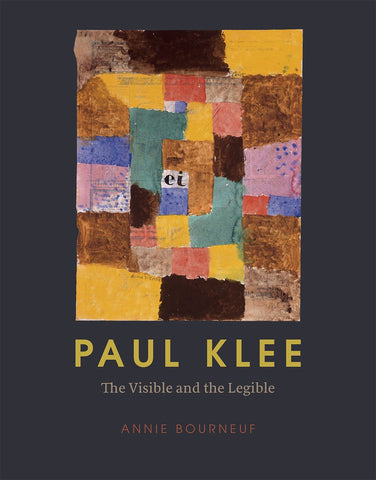Paul Klee: The Visible and the Legible
Paul Klee: The Visible and the Legible
By Annie Bourneuf
“Bourneuf’s cogent and scholarly discussion illuminates Klee’s critical engagement with the ideas and practices of other artists, including Kandinsky, van Doesburg and Moholy-Nagy. . . . This book offers a salutary lesson for artists who mistakenly imagine painting to be simply about technique and making and who have constructed an illusory division between practice and theory. Bourneuf effectively demonstrates how Klee’s artwork is itself a critique of theories and practices, and she conjures up for the reader the muscularity of artists’ thinking about art in that period.”―Times Higher Education
"Scholars have been drawn to the literary in Klee's work. Annie Bourneuf’s beautifully produced book provides one of the most detailed studies on this theme. There are fresh insights on every page. . . . Bourneuf gives a superb account of Klee’s profound and endlessly fascinating imagination."―Times Literary Supplement
“With analyses that are wonderful to read and brilliantly contextualized, Paul Klee: The Visible and the Legible shows how complex and, within the years from 1916 to 1923, how variable Klee’s artistic positions are.”―CAA Reviews
The fact that Paul Klee (1879–1940) consistently intertwined the visual and the verbal in his art has long fascinated commentators from Walter Benjamin to Michel Foucault. However, the questions it prompts have never been satisfactorily answered—until now. In Paul Klee, Annie Bourneuf offers the first full account of the interplay between the visible and the legible in Klee’s works from the 1910s and 1920s.
Bourneuf argues that Klee joined these elements to invite a manner of viewing that would unfold in time, a process analogous to reading. From his elaborate titles to the small scale he favored to his metaphoric play with materials, Klee created forms that hover between the pictorial and the written. Through his unique approach, he subverted forms of modernist painting that were generally seen to threaten slow, contemplative viewing. Tracing the fraught relations among seeing, reading, and imagining in the early twentieth century, Bourneuf shows how Klee re-conceptualized abstraction at a key moment in its development.
Hardcover
251 pages | 32 color plates, 35 half tone
University of Chicago Press, 2015
7 x 9 inches
ISBN 9780226091181
Artist Monograph, Essay, Painting, Abstraction

